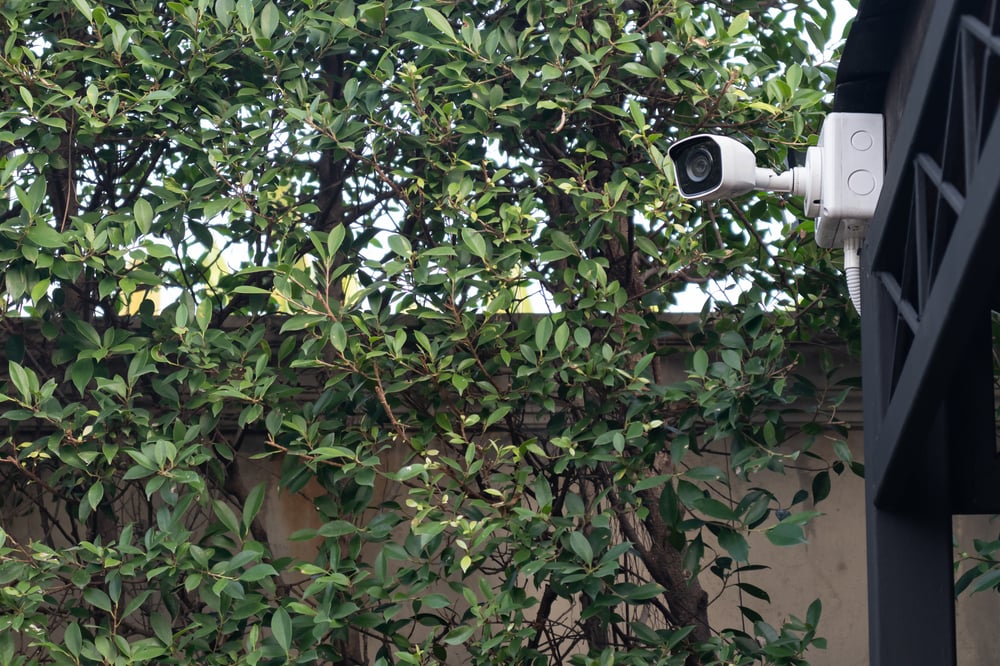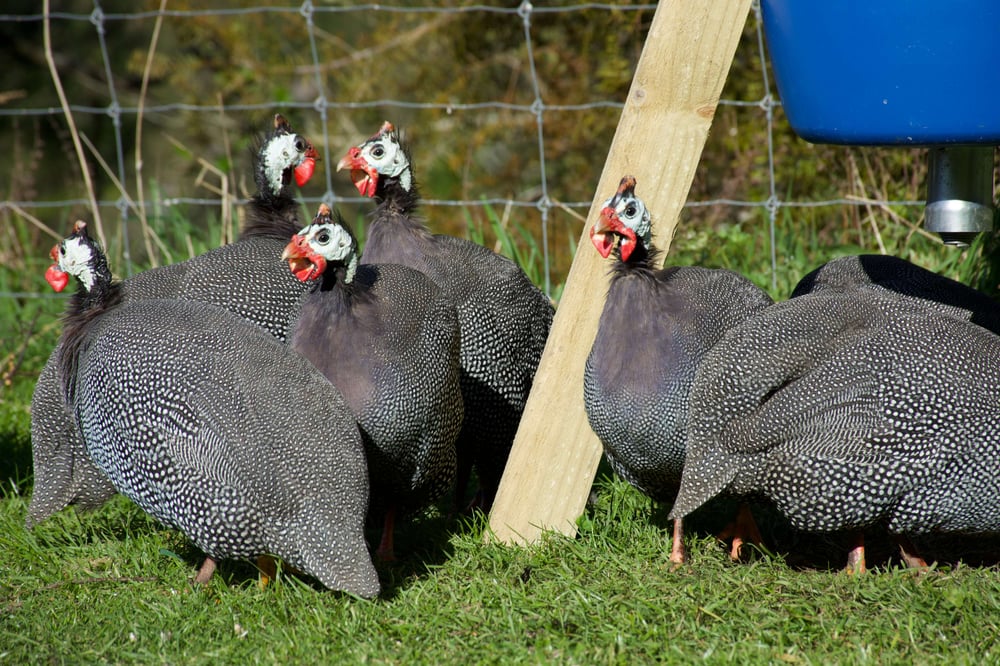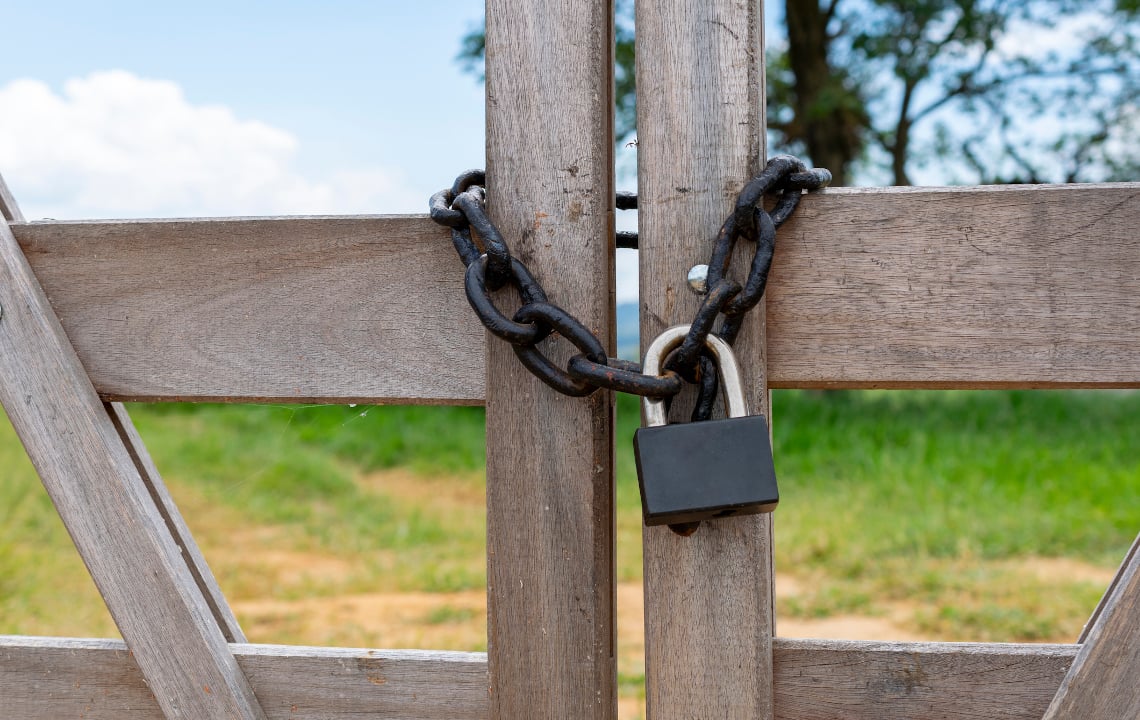Rural crime rates are about half that of urban crime rates (which is why many people are moving to the country), but that doesn't mean you should neglect to safeguard your homestead or rural property. A survival expert shares practical tips for how to beef up your home defense strategies in the country.
Living within the peace and quiet of the country can easily lull one into a false sense of security, and many move to the country to escape the worries of urban crime.
However, rural properties are not immune to burglaries, robberies and home invasions.
- Statistics show that more than one-third of assaults and 60% of rapes occur during home invasions.
- A third of home invasions occur when someone is at home.
- Burglary is defined as entry into a home when homeowners are not present, and robbery is when homeowners are present.
- Rural crime rates are about half the rate of urban crime.
- In 2021, usafacts.org stated that there were 11.7 million property victimizations.
- The rate for urban areas was 24.5 per 1,000 people and the rural regions were 11.1 per 1,000. Even though rural crime was less, the numbers are alarming.
- More than two million home burglaries occur yearly, most from mid-morning to mid-afternoon. This is likely because many homeowners are not present during those hours.
- Home invasions occurring when homeowners are present result in more than 25% of these becoming victims of violent crimes.
It is thought that the high level of home burglaries may be because most homes are not well prepared to resist the act of burglary or home invasion.
With the increasing level of crime, it is wise to consider how we can protect our property and avoid the trauma of experiencing a break-in.
Even worse than the loss of valuables is the aspect of personal safety and the potential for a life-altering or life-ending confrontation.
Plus, if you live on a homestead, hobby farm or working farm, your livestock and other animals rely on you for protection.
It is impossible to be 100% safe and protected, but taking a few simple steps to secure your rural home is wise.
Start With the Basics of Home Defense
One can take some simple steps to lessen the possibility of home burglary.
Most do not require a financial investment but are common sense actions.
- Secure windows: This may require updating the locking mechanism or merely checking to be sure the locks are engaged.
- Keep doors locked, Even when at home. A solid storm door with a sound locking system is desirable to allow outdoor light to enter.
- Avoid large shrubs that screen entrances: This allows intruders to hide easily to confront homeowners exiting or entering the home.
- Don’t post online information about upcoming or current trips: Although it can be tempting to showcase your beautiful vacation on social media or personal blogs, this information can easily be used against you, assuring intruders of a low possibility of confrontation. Also, stop mail delivery, which would allow mail to stack up and have a trusted friend or neighbor pick up any packages.
- Instead of using your carport for storage, keep vehicles inside: This makes it more difficult for burglars to monitor your presence.
- Get to know your neighbors: One thing that doesn’t involve any expenditure is getting to know your neighbors. This may take more effort in rural areas, but it is well worth it. A neighborhood watch group is a good deterrent for crime (even in rural areas), and nearby neighbors can be alerted when you are planning to be away for an extended period.
Electronic Measures to Protect Your Property
Some electronic devices make the likelihood of theft less likely. Some require minimal investment, while others may be more costly.
- Install a burglar alarm. Excellent systems are available for a reasonable cost, and here are some features that may be included:
- Sensors placed on doors and windows.
- Motion detectors: If placed strategically, they may minimize the required window sensors.
- Lighting with motion detection capabilities is a good deterrent for barns, tool sheds and other structures that are not near the home.
- Keypads placed near the primary entrance. Large homes might require more than one, but smaller homes might only need one.
- If you have alarm systems, place signs strategically to deter criminals from trying to burglarize property.
- Light sources with motion detectors may be all required to deter an intruder.
These may be special units that detect motion and cut off light or as simple as special bulbs in outside light receptacles with “built-in” motion detection capabilities.
These special bulbs require the light switch to be activated. When activated, the bulb will turn on for one minute and then go dark. Any additional movement near it results in instant light. When daylight conditions resume, the light cuts off automatically.
These are essential for protecting rural properties where street lights and other light that may deter criminals are minimal or non-existant. Beyond the home, consider installing light sensors on your barns, outbuildings and sheds.
- Larger properties with gated entryways may have electronic communication devices where visitors can buzz the house, and the homeowner can open the gate remotely if desired.
- Another low-cost option is an inexpensive timer to turn on some lights at dusk and off at a reasonable hour if you'll be away after sunset.

Additional Measures to Protect Your Rural Home and Property
Consider purchasing a safe if you have expensive jewelry, firearms or other easily portable valuables. This is a sizable investment but offers excellent peace of mind.
10 Additional rural home and Property defense actions to consider:
1. Install dead bolt locks on all doors.
2. If the property is of significant size, consider signs on property boundaries (No Trespassing, Camera Surveillance, etc.)
3. Doorbell cameras can be linked to cell phones so that you can monitor during your absence.
4. Use trail or surveillance cameras to monitor property. These are handy for tracking trespassers and potential predators and knowing what passes through your property.
Some trail cameras are available that transmit images by telephone when the camera is activated. Others may only record images on a camera card. Prices vary significantly based on capability.
Listed below are some of the brands and suggested prices:
- Bushnell Core DS No Glow $199.99
- Campark T90 $99.99
- Spypoint Force-20 $99.99
- Moultrie Micro 42i $87.99
- Reconyx Hyperfire 2 $78.47
The Best Trailcams For Fast-moving Animals
- Browning Strike Force HD Pro X $154.99
- Cuddebak offers Cuddelink Cameras for $180.00 and a $10 monthly plan to link up to 23 cameras that will transmit up to a quarter mile, and cameras will daisy-chain up to 2 miles. This allows images to be transmitted to a single SD card or delivered directly to a home base by LTE (Long Term Evolution).
See Backyard Sleuthing: Tips on Choosing a Wildlife Camera/Trailcam for Your Rural Land for more information.
5. If property size merits it, contact the sheriff’s department and/or wildlife agency department to patrol when possible.
6. Animal sentries: If you live on a homestead, hobby farm or farm, you may also consider using animals for home, property and livestock protection.
- Free-range geese and guineas usually sound a loud alarm when intruders or predators are around.
- Watchdogs, guard dogs or flock dogs are other excellent options for home and livestock protection.
- Donkeys are excellent additions to protect sheep and other farm animals from predators such as coyotes.

7. Commonsense Predator Control: Hobby Farms publications have extensive information about predator control. They list several non-lethal steps that will help control predator populations. They include:
- Not putting meat, eggs or dairy products in your compost heap
- Not leaving dog or cat food outside
- Cleaning up if large livestock gives birth outside
- Keeping poultry and young animals in predator-proof areas at night
- And removing or burying the carcass of any animal that might die on your property
The United States Department of Agriculture has extensive information available online about lethal and non-lethal predator control. They also have programs and services for removing problem animals such as beavers and raccoons. Raccoons have been identified as significant carriers of rabies. USDA estimates that for a dollar spent on predator control, there is a return of $4.87.
For specific tips on predator-proofing your chicken coop, see: How to Predator-Proof your Chicken Coop with The Chicken Chick.
9. Garage door locks: Few people realize garages don't typically lock on their own. Garage door locks are inexpensive and help prevent break-ins in homes and garage workspaces.
10. Firearms: No sane person wants to be faced with a situation where they might need to harm another. However, those living in remote areas might consider getting a concealed weapons permit. By doing so, they will be required to obtain the necessary training to properly use a weapon and its legal obligations.
We can never be completely assured of the safety of our property, persons or animals. Still, these steps will help to make it more likely that you will avoid a confrontation or be adequately prepared if it does occur.





.jpg)




















